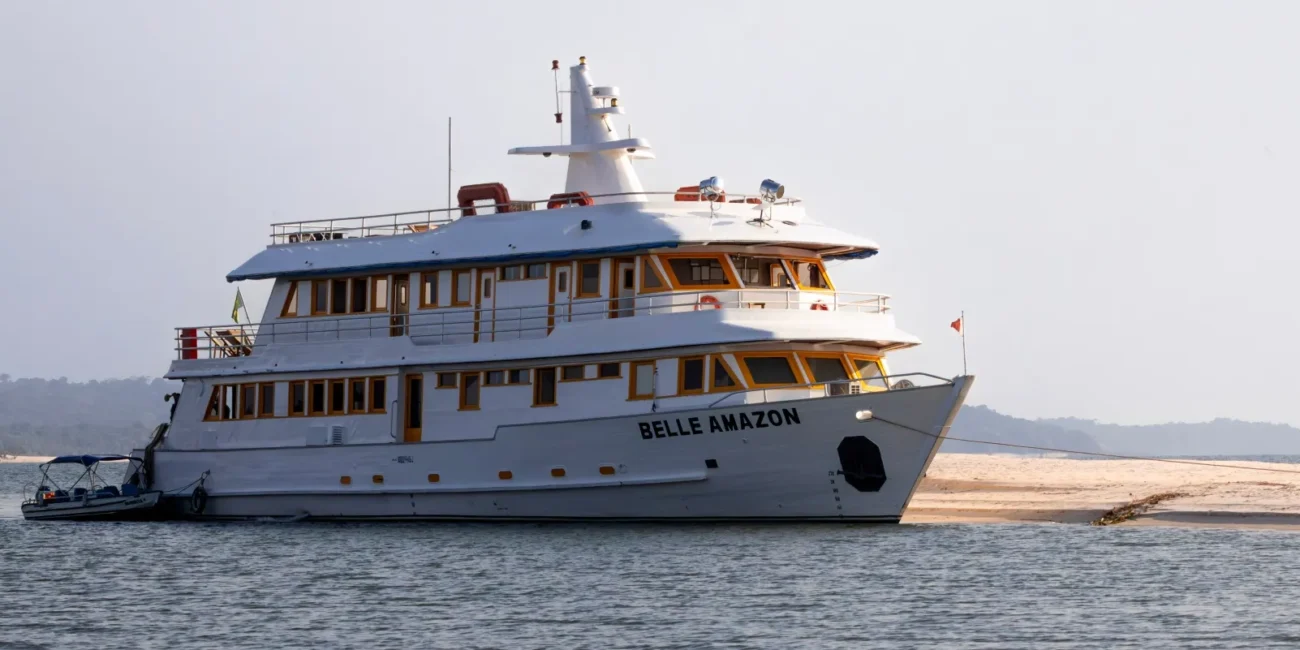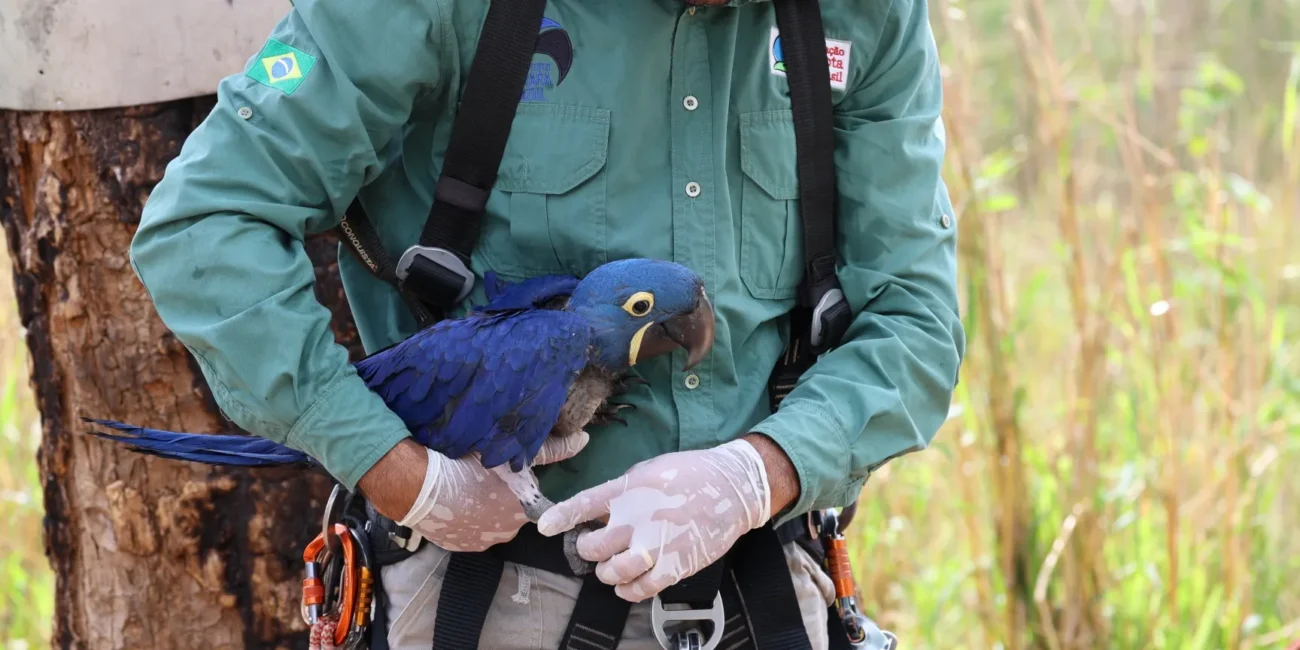In Zimbabwe’s dawn light, elephants stir dust, lion roars echo across valleys and fish eagles cry overhead. It is a land teeming with life, but also resilience and quiet urgency.
From floodplains to forested escarpments, Zimbabwe shelters a diverse array of life, including pangolins, painted dogs and over 6,000 plant species. Nearly a third of its land is protected. But protection doesn’t mean peace.
Forests vanish. Rivers dry. Poachers strike. And yet, communities rise. This is the story of Zimbabwe’s wild heart: the species that define it, the threats they face and the people working to protect what remains. Conservation travel here builds an understanding of what’s at stake, who’s taking action and how your journey into the field can make a difference.
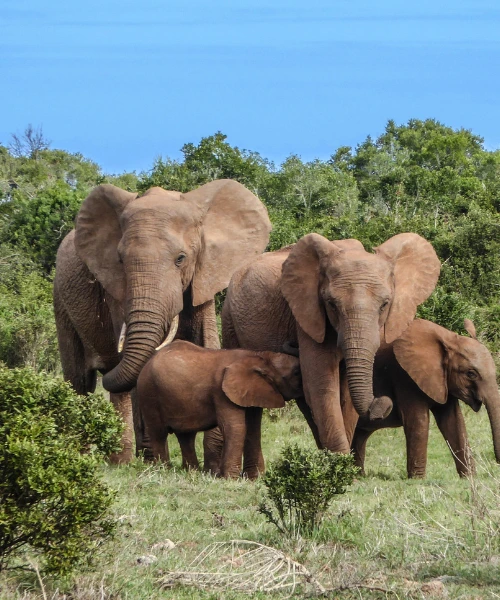
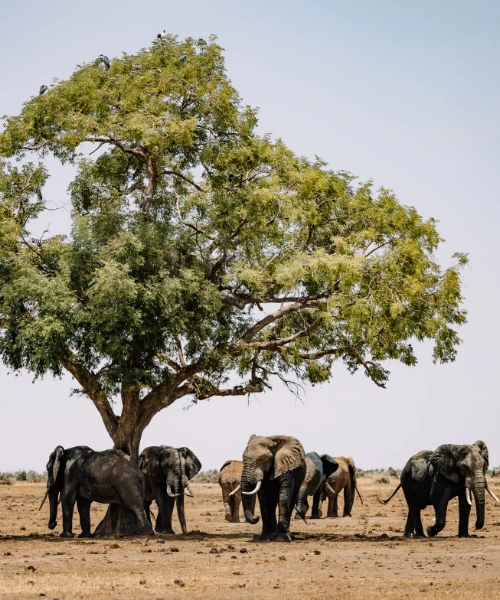
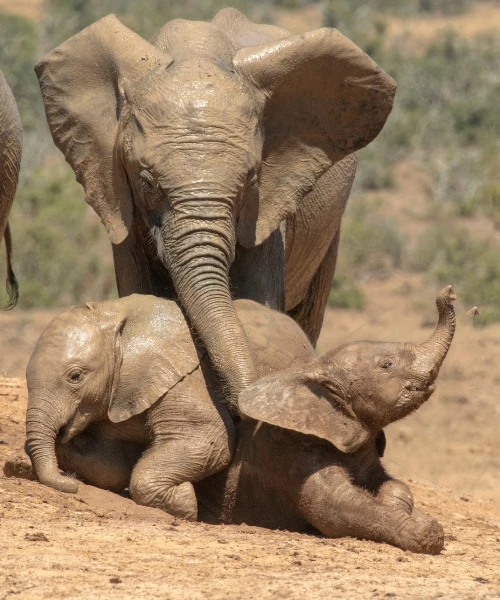
Iconic Species at Risk
Zimbabwe’s wildlife conservation begins with its most recognisable species. Elephants, rhinos, wild dogs and more shape the land and signal the health of entire ecosystems.
Elephant Conservation in Zimbabwe
Zimbabwe’s elephants change the landscape with every step. They dig for water in dry riverbeds, clear pathways through thick bush and spread seeds that restore woodland. No species plays such a direct role in sustaining the savannah.
However, poachers continue to kill them. In 2013, they poisoned over 100 elephants in Hwange National Park. In 2024, they shot six in the Gwayi-Shangani Conservancy. These attacks feed the ivory trade and threaten local stability.
The Room to Roam initiative, led by IFAW, reopens safe corridors across elephant ranges. Because many elephants live outside parks, where danger increases, reconnecting those habitats helps them move freely and reduces conflict.
But legal penalties remain weak, and rangers often work with outdated tools. Without funding, training and support from communities, elephants will continue to disappear.
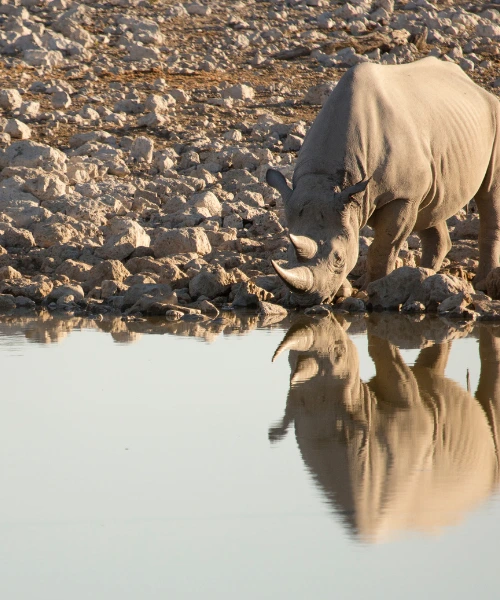
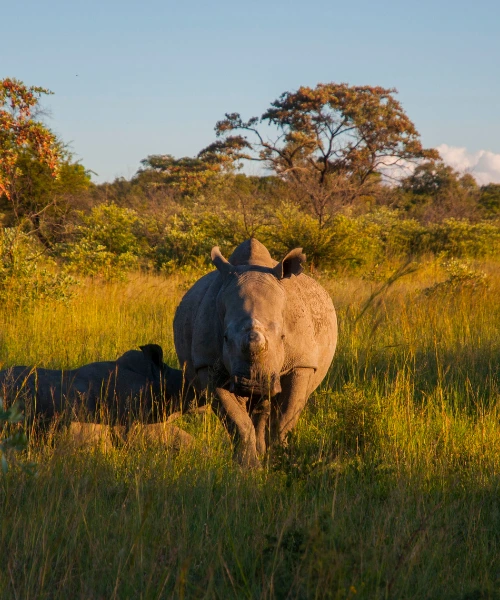
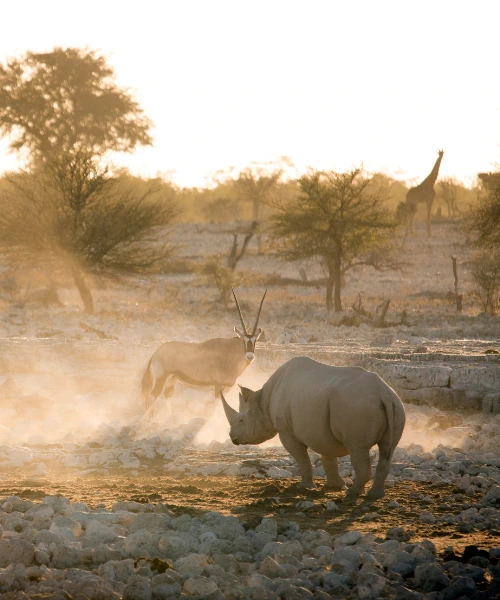
Black Rhino Conservation in Zimbabwe
Black rhinos, once extinct in parts of Zimbabwe, have now been reintroduced to Gonarezhou. Conservation teams keep 29 individuals safe within a monitored zone. They collar each rhino, track their movements and maintain round-the-clock security.
Even so, elephants often crowd the same areas. Both species feed on woody shrubs, particularly during dry months. During food shortages, competition escalates.
To protect rhinos, rangers use helicopters to move elephants out of key zones, but this requires effort, planning and persistence. The Lowveld Rhino Trust supports this work. It checks rhino health, helps injured animals and runs educational programmes in local schools.
The real solution lies in community ownership. When people protect rhinos because they value them, the species stands a chance.
African Wild Dog Conservation in Zimbabwe
Painted dogs once roamed across Africa. Today, fewer than 7,000 remain due to habitat loss, human persecution, disease and competition with larger predators. Zimbabwe boasts one of the most substantial populations thanks to the efforts of Painted Dog Conservation (PDC).
PDC fits dogs with radio collars, removes snares and runs anti-poaching patrols staffed by locals. They also hold bush camps for schoolchildren, building awareness from the ground up. They even transform snares into sculptures, using art to raise funds and tell stories. Their work shows how local creativity supports lasting change.
African wild dogs help balance prey populations and strengthen ecosystems, so their return signals an improvement in environmental sustainability in Zimbabwe.
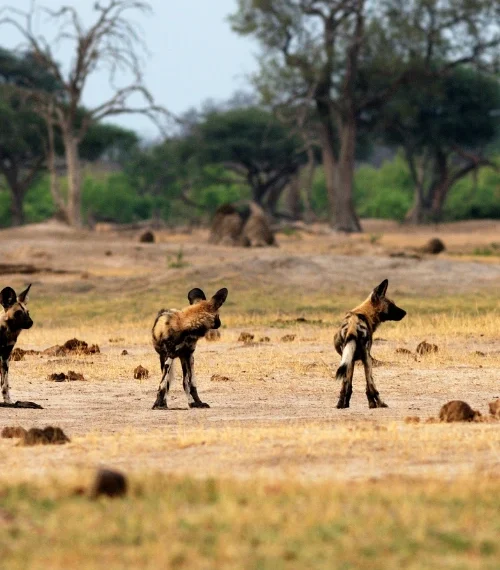
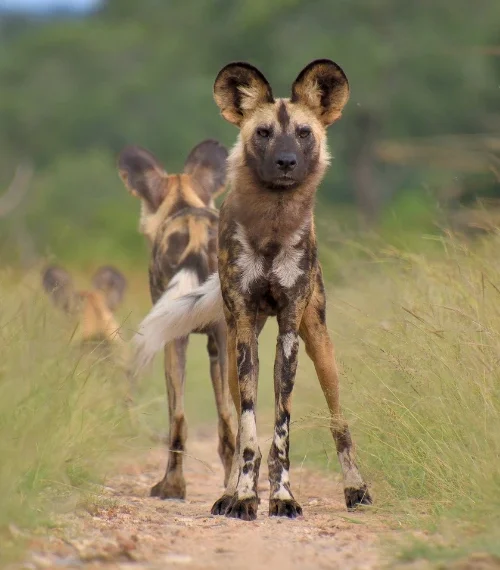
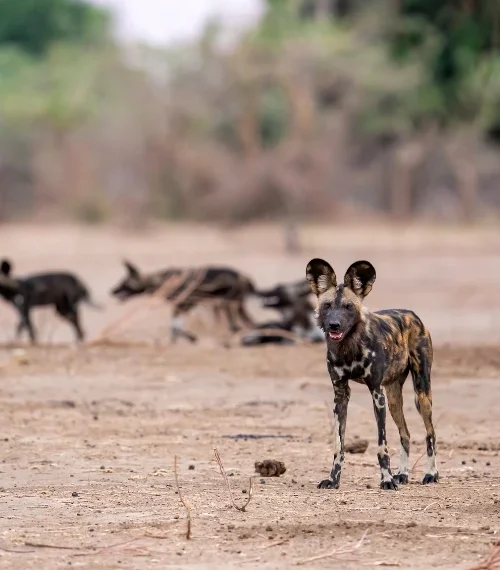
What Drives the Decline?
To understand Zimbabwe’s wildlife conservation, we must examine the threats the country’s wildlife faces. The causes overlap and build on each other.
Deforestation and Habitat Loss
Each year, Zimbabwe loses up to 330,000 hectares of forest. Tobacco farmers burning vast amounts of wood to cure leaves is one of the most significant contributors to the loss, as well as brick making, mining and road building.
The majority of rural households rely on firewood for cooking. Economic hardship worsens the reliance, putting more pressure on dwindling woodlands. Trees disappear. Soil erodes. Streams run dry.
The Forestry Commission leads replanting efforts and promotes agroforestry, integrating trees into farms to restore soil and provide alternative fuel sources. But loss still outpaces recovery as economic instability, a growing population and scarce access to alternative energy sources continue to drive unsustainable wood harvesting.
Poaching and Illegal Wildlife Trade
Poachers killed a third of the elephants in the Lower Zambezi between 2001 and 2014. Rhino killings reach the hundreds. These figures represent a system, not isolated crimes.
Traffickers operate with modern equipment and inside knowledge, whilst rangers often go unpaid and work without proper gear. Laws rarely deter, and strengthening patrols isn’t enough on its own. Governments must tighten laws, technology must reach field level and communities must have reasons to protect, not exploit, their local wildlife.
Climate and Community Pressures
Zimbabwe’s climate grows less predictable, and the repercussions are immediate. Rains fail, crops suffer and animals and people search longer for water.
Families rely more on forests, with some turning to bushmeat and removing trees for firewood. At the same time, invasive species like Lantana camara choke wetlands and crowd out food sources.
The pressure is human, too. People need new ways to thrive, and community-led conservation offers those paths. When locals help manage land, share revenue and gain access to education and tools, they start to shape a future that works for both people and nature.
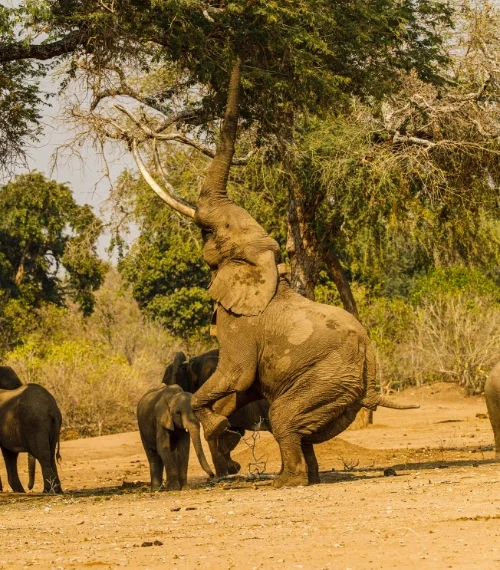
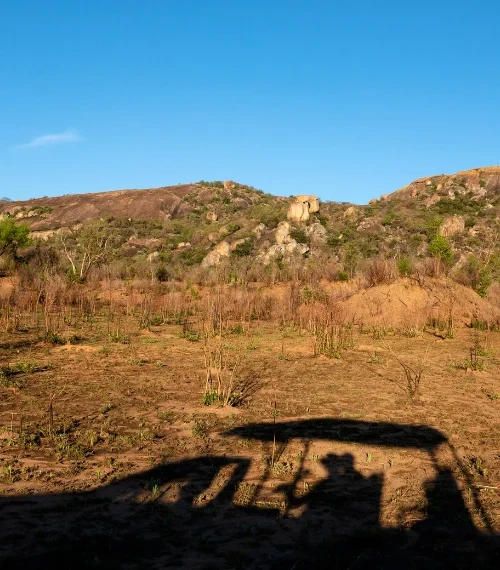
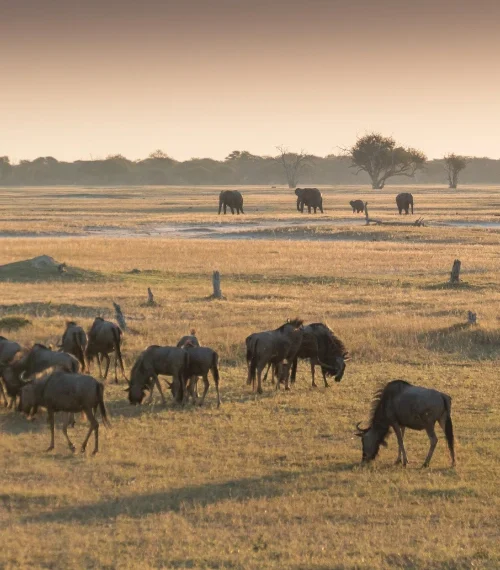
Stories of Hope
Zimbabwe’s future rests in more than just policy. It lives in everyday actions, from planting trees and removing snares to welcoming travellers and telling stories.
Mahenye Campfire Project
In Mahenye, near Gonarezhou, villagers took conservation into their own hands. They joined the Campfire Association in 1982 and began managing wildlife themselves.
They were able to keep tourism income local, building clinics and boreholes and paying school fees. They included elephants as part of their economy and identity, rather than viewing them as enemies.
Clive Stockil, one of the founders, said:
‘Some of my greatest successes I count are turning conflict into cooperation between the Mahenye Community and the Gonarezhou National Park, participating in the process of pioneering a concept of co-existence between people and wildlife.’
While political and financial challenges tested the model, Mahenye demonstrated that shared ownership is an effective approach to achieving its goals.
Working Together on the Ground
In other parts of the country, NGOs and communities collaborate daily to protect the land. IFAW reconnects elephant ranges. BirdLife Zimbabwe restores wetlands and trains farmers. The Gonarezhou Conservation Trust combines science, patrols and outreach to support species at risk.
These efforts are effective because they remain grounded. They adapt, listen and keep going.
A Future Worth Protecting
Zimbabwe’s wildlife conservation story is about communities who step up, rangers who stay alert, farmers who plant trees, young people who learn to track prints in the dust and conservation travellers who help sustain these efforts.
Together, these actions form a pattern of survival, and when you travel to Zimbabwe with curiosity and care, you become part of that pattern. Rather than just observing, you listen, learn and support a living story.
This country still fights for its wild heart, and it’s asking the world to walk beside it.
Interested in Supporting Zimbabwe’s Conservation Efforts?
Journeys With Purpose offers private, conservation-focused adventures to Zimbabwe, with tailor-made itineraries built around your passions. We also plan hosted journeys – get in touch with our expert travel specialists today on +44 20 8044 9538 or at connect@journeyswithpurpose.org.
